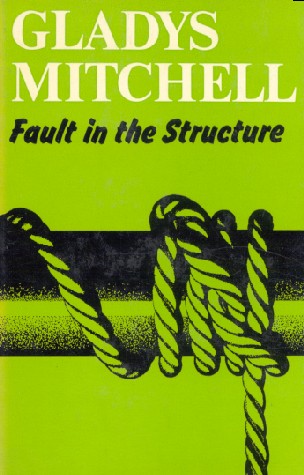Fault in the Structure

Depending on how one looks at it, Mr. Theddeus E. Lawrence manages to incur either terrible misfortune or celebrated windfalls. Relatives and family members have a habit of dying, but Lawrence is often compensated for his loss. His father (who allowed his wife to christen their son Alfriston Calliope [A.C.] Swinburne) perished in a car crash while his son was at the wheel; a sympathetic school benefactor failed to get medical attention in time and died of an aneurysm; and now it appears that Mr. Lawrence’s first wife has turned up, only to go missing again. When a body is discovered, though, it belongs to the man’s second wife, a college secretary who is found buried on the school grounds, her throat cut. Dame Beatrice first hears of the case from her son, Sir Ferdinand Lestrange, who is investigating an embezzlement charge against the busy Mr. Lawrence. Dame B. continues to watch events unfold, but prefers to remain in the background, believing that the police will have a difficult time proving its theory. Ultimately, Lawrence is jailed–for drunken driving and resisting arrest. The years pass, and one night Dame Beatrice’s secretary Laura Gavin attends a meeting of the local dramatic society. The question before the group: what to present at the Caxton festival, an affair celebrating printing-press innovator William Caxton. After much deliberation and theatrical argument, the society decides to mount a production of John Gay’s The Beggar’s Opera. The rehearsal process is bumpy, but eventually the show gets pulled together. Dame Beatrice is interested to hear Laura’s news that a headstrong society member is determined to recruit a reluctant villager, a young printer sharing the name of William Caxton, to take part in the pageant. Remembering her acquaintance with the man named T.E. Lawrence and A.C. Swinburne, Dame Beatrice decides to watch over the festival activities, which is just as well: during The Beggar’s Opera’s final performance, the actor playing Macheath is fatally strangled by (what should have been) a prop noose. Laura and Dame B. talk through the puzzle before them and reach a conclusion by assigning identities to the luckless roles of victim and murderer.
(Synopsis kindly by Jason Half for information only. If any third party would like to use this material please contact jason@jasonhalf.com).
“The marvel is that although Miss Mitchell has been so prolific, she has also been so good.” Edmund Crispin, Sunday Times
“She is one of the Big Three women detective writers” Observer
“Miss Mitchell began her career in the golden age of detective fiction and has maintained her highly individual talent through all the genre’s vicissitudes” P.D. James, Times Literary Supplement
“For sheer unbridled imagination she is unrivalled in the detective field.” New Statesman
On Dame Beatrice:
“…a lively, ancient dame bouncing happily through crime with a will and a wit as deadly as a snake’s tongue” John O’London’s Weekly
“…almost, if not quite, the only woman detective of genius” The Times